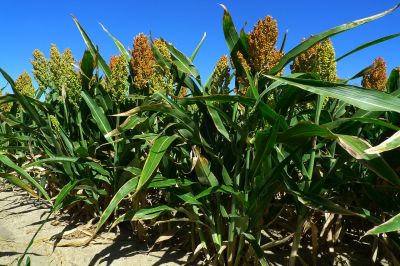Sweet sorghum has many advantages over other crops when it comes to producing sugar for biofuel. A large international consortium has developed new hybrids, crop models and sustainability analyses to assist in exploitation in numerous environments.
Sorghum is a multipurpose crop producing food and feed as well as fuel from sugars in the stem. The bottleneck to date has been the lack of sorghum varieties available for production of ethanol. The 'Sweet sorghum: an alternative energy crop' (
SWEETFUEL) project pooled resources to breed strains of sweet sorghum that would maximise its productivity.
Composed of members from Europe, India, Mexico, South Africa and South America, the multidisciplinary group represented all the different regions where sweet sorghum is grown. Breeding objectives were tailored to the range of weather and social conditions under which the crop is cultivated.
Several hybrids with better tolerance to cold temperatures, acid soils with aluminium toxicity or improved water-use efficiency were produced and tested for the first time. Some produced more biomass than commercially available lines in the temperate zone. The team also screened candidates for drought resilience and for high sugar in India, South Africa and Mexico. Improved hybrids were developed for these conditions.
Variety and hybrid development and industrial management practices for Brazil was particularly successful. The team has contributed to delivery of some hybrids adapted to low fertility environments that are now available on the market. A partnership with the sugarcane sector is developing sweet sorghum to complement the sugar cane production during the off season. According to the plan, 20 % of the sugarcane land could be used for sweet sorghum production.
In silico experiments helped identify genes involved in the drought response and experimental work is revealing agronomic indicators that predict optimised biomass yield in sorghum. The team also identified post-harvest techniques and logistics leading to development of a crop model. It will be used for geographic zoning of crop adaptation to climate and soils. . Finally a full sustainability assessment identified the most sustainable sweet and biomass sorghum pathways which include high greenhouse gas savings next to other benefits for environment and society. At the final project meeting, researchers presented a multi-criteria evaluation of the sustainability of sorghum production and use.
Knowledge gained will be used to publish a handbook outlining essential information for ethanol production in the target environments. This will empower stakeholders to make changes that positively impact their economies, food production and energy security.
A video titled
Complementation of sugar cane by sweet sorghum in Brazil is available on the project website.

